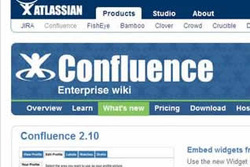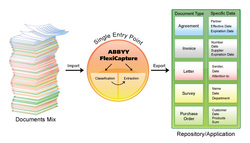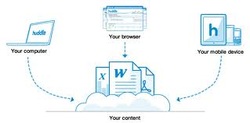
Confluence has the widest spread application of Atlassian's products, it could be applied in almost any environment. It is free to open source institutions and non-profits. Pricing starts at just a charity donation of US$ 10 for hosted smaller installations for less than 10 users.
Price breaks go neatly up through the ranks until you are only paying US$ 1 per user, if you have 2,000 of them for the Hosted version.
Features
Confluence offers the ability to create one or many sites, for the whole company, different teams, groups or classes of worker. Managing them is done through an elegant set of administration tools and dashboards.
Setting permissions is very easy.
Sites can be styled and formatted as needed. With styles for the most typical areas such as human resources, design projects, along with templates for common tasks like meetings, project plans, intranet or team project page can be created very quickly.
Communities are presented through bios, pictures, home pages. Users can find each other by holding the cursor over someone's name. To see a brief bio, they need to click on that name and they visit the main page.
Users can chart work progress through blogs, their status updates can be seen by other users in the group and home pages. There are also YouTube videos and Twitter-style updates.
Users will also get notifications (or can create an RSS feed) when someone edits an entry or changes a file.
All documents can be kept in one place accessible to all relevant users.
When combined with Atlassian's JIRA, users can create step-by-step workflows that will see tasks completed in a by-the-numbers fashion and everyone's contributions and input can be tracked.
The site has search function. Searches, updates and other entries can also be filtered to limit the search. There is autocomplete feature for the search.
Confluence has the ability to connect to applications like SharePoint. Confluence has a SharePoint connector. It also has full MS Office compatibility and smartphone access.
Confluence has Sandbox where you can try its features.


 RSS Feed
RSS Feed
